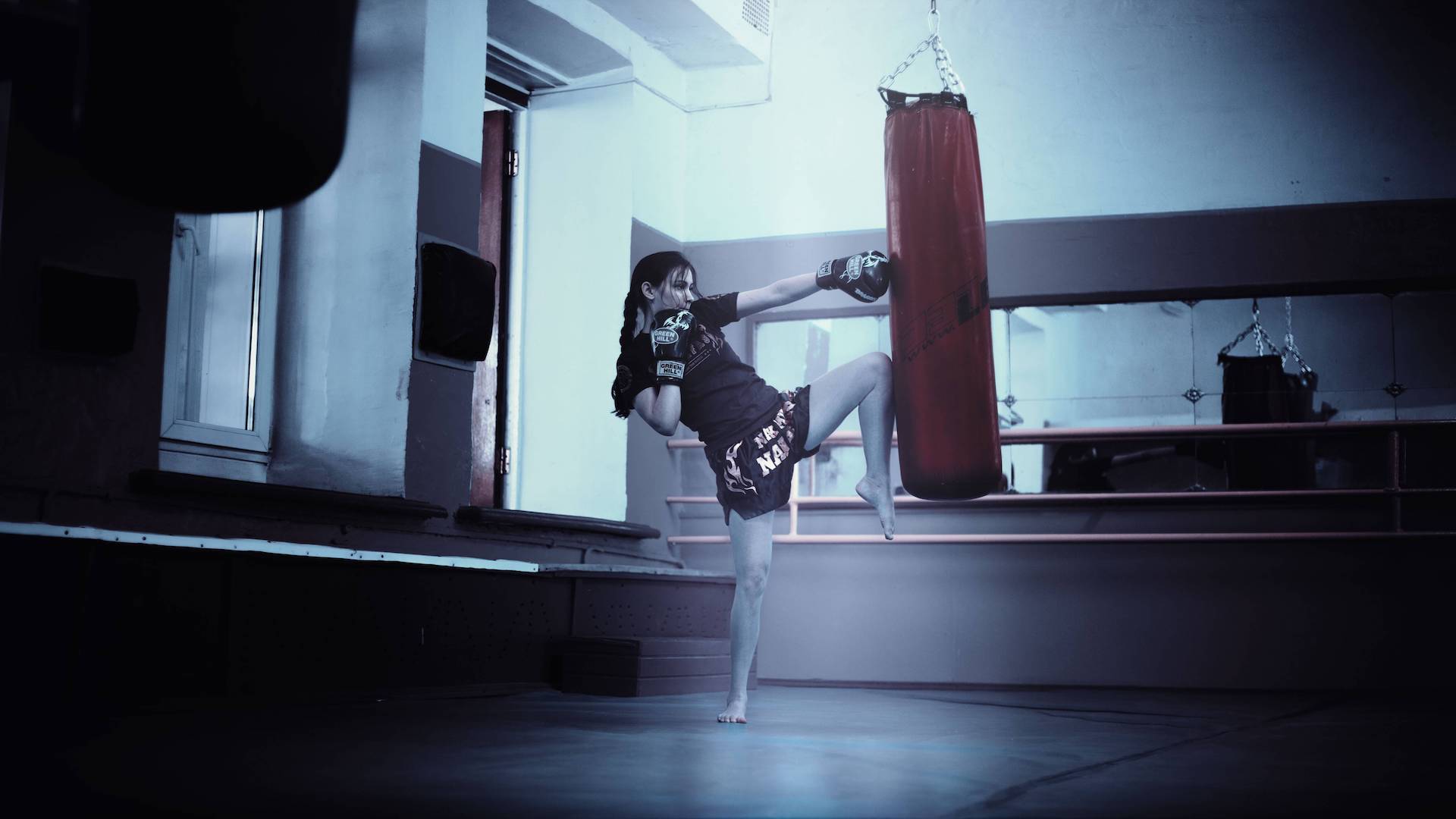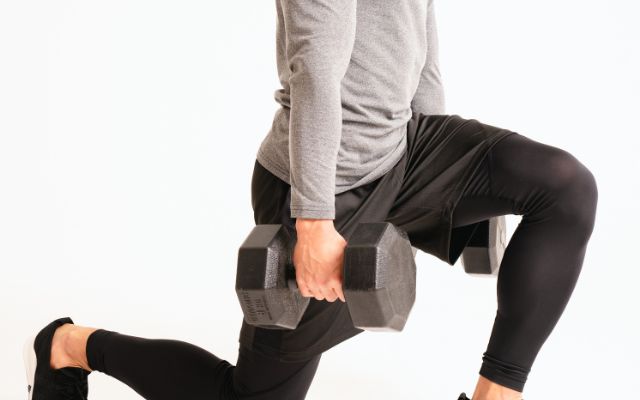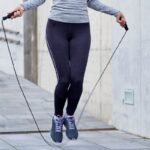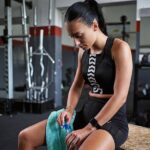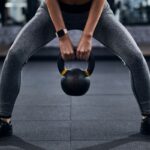The single-leg dumbbell deadlift (SLDL) can feel a bit intimidating at first, balancing, using the right muscles, and picking the correct weight might seem tricky. But with proper guidance and technique, it’s a game-changer for building strength, enhancing balance, and shaping your physique. Focus on mastering your form and progressing gradually, and you’ll unlock the full benefits of this dynamic exercise without the worry of injuries. Let’s work on it together!
Single Leg Dumbbell Deadlift Proper Form and Technique
Starting Position
Establishing a solid starting position is crucial for a successful SLDL. Proper foot placement and stance width provide a stable base for the exercise. Position your feet hip-width apart or slightly wider, ensuring that your hips are square with your torso. Your dumbbell grip should be in line with your shoulders and arms, with the dumbbell snugly in your hand, positioning your hand opposite to the leg you’ll be lifting. A neutral spine, a flat back, an engaged core, and a slight bend in the standing knee are key to maintaining proper posture and preventing injury. Maintaining an upright spine throughout the movement will safeguard your lower back.
Lowering Phase
The lowering phase of the SLDL is where many beginners stumble. It’s essential to hinge at your hips, keeping your back straight, and gradually lowering the weight. Avoid rounding your lower back. Focus on engaging your core and maintaining a stable spine throughout the movement. Bend your knees to support your lowering action, but avoid excessive knee bending or locking the front knee. You’ll notice improved stability if you engage the non-working leg and foot by flexing the foot and pulling the toes towards the shin. This will help you generate the necessary stability throughout the movement.
Raising Phase
The raising phase is about activating the correct muscles. Begin the lift by engaging your glutes and hamstrings. Drive through the heel of your standing leg, pulling the heels together as you straighten your hips. Maintaining balance and spinal alignment throughout the upward movement is key. Continue to utilize the flexing foot and core engagement to support the movement. Your gaze should follow the movement to keep your neck neutral, and your hips should stay square to the ground.
Weight Selection and Progression
Beginners should start with lighter weights to focus on mastering the proper form. Prioritize maintaining proper technique and safety over lifting heavy weights. Progression should be gradual and based on your individual strength and experience level. Increase weight incrementally, assessing your ability to maintain proper form as you progress. Gradually reducing support, changing foot placement, and employing variations in the exercise are other progression options that you can use to increase the difficulty gradually and safely. You must prioritize perfect form above all else.
Balance and Stability
Maintaining balance during the SLDL is essential for injury prevention and effectiveness. Engage your core muscles to help stabilize your torso and maintain balance. Keep your weight distribution balanced to avoid shifting your weight excessively onto one leg. The non-working leg plays a significant role in maintaining balance. Use an elevated surface under your working leg for support if required. For complete stability and confidence, you might find practicing the exercise against a wall or with a spotter initially helpful.
Muscles Worked
The SLDL targets a wide range of muscles, contributing to overall strength and stability. It primarily works the glutes and hamstrings, improving their strength and tone. The exercise also engages the quads, core, and spinal erectors, contributing to enhanced core stability and lower back strength. Developing these muscles holistically will empower you to carry out other daily tasks more effectively and with enhanced power.
Variations and Progressions
Variations
Modifying the SLDL can offer an adjustment to different fitness goals or physical traits. Try a wider stance to increase the range of motion, providing a deeper stretch and glute activation. Placing an elevated surface under the working leg adds resistance, making the exercise progressively more challenging. Consider variations such as the single-leg Romanian deadlift or single-leg deadlift with external resistance depending on your individual needs.
Progressions
Incrementally progressing the exercise helps target progressively more challenging feats. You can start by increasing the weight gradually and steadily, adapting the foot placement, and reducing support until you can perform the exercise without assistance. Introducing variations in the exercise can progressively enhance your overall strength and stability levels.
Modifications/Alternatives
If you have injuries or limitations, modify the exercise to accommodate your needs. Reduce weight, use lighter dumbbells, or work from a more accessible starting point. Alternatively, you can substitute the exercise with similar movements like the Bulgarian split squat or the single-leg deadlift with a resistance band to focus on the targeted muscles while avoiding potential risks. Modifications and alternatives can be necessary to maintain safety and effectiveness.
Common Mistakes and How to Fix Them
Common mistakes during SLDL often stem from poor form and improper technique. A common fault is arching your back, which can be corrected by ensuring your core remains engaged and you hinge from your hips. If the weight is shifting forward, adjust your grip and stance to maintain a centered posture. Excessive knee bending in the support leg leads to instability. Ensure the knee is bent at a proper degree to maintain stability and support. Excessive bending of the working knee can be addressed by maintaining a slight bend throughout the entire movement, instead of fully extending or bending excessively. Maintaining core engagement helps correct uneven hips and maintain balanced hip positioning throughout the entire exercise. Excessive hip rotation can cause instability. By maintaining a stable posture, and keeping your torso square to the ground, you can remedy the issue. Ensuring consistent engagement of the standing leg helps prevent excessive hip drop and helps target the correct muscles, maintaining proper stability.
Injury Prevention
Always prioritize injury prevention during exercises. Starting with a warm-up is crucial to prepare your muscles and joints for the SLDL. Proper form, weight selection, and progressively increasing weight or difficulty while adhering to a personalized progression plan will prevent injuries. If you have pre-existing injuries, consult with a doctor or physical therapist before starting a new exercise routine. It’s paramount to listen to your body throughout the exercise and recognize any signs of discomfort. If pain arises, cease the exercise immediately and address the problem accordingly.
Training Programs and Workouts
Designing a workout incorporating SLDL depends on your fitness level and goals. Beginners should start with a lower volume and progressively increase frequency and intensity as their strength and fitness levels improve. Incorporating SLDL into different workout routines, such as strength training or functional fitness programs, can provide a varied stimulus for your body to adapt to. Listen to your body regarding rest and recovery for optimal progress. Rest periods are important to allow your muscles to recover and rebuild strength.
Conclusion
Mastering the SLDL requires a deep understanding of proper form, weight selection, and balance strategies. Listen to your body, prioritize proper technique, and stay within your capabilities. By following the guidance in this post, you can incorporate this impactful exercise into your routine, achieving your fitness goals effectively and safely. Remember to practice consistently and adjust your technique based on your individual progress. Stay committed to your fitness journey. This will ensure you experience success.

